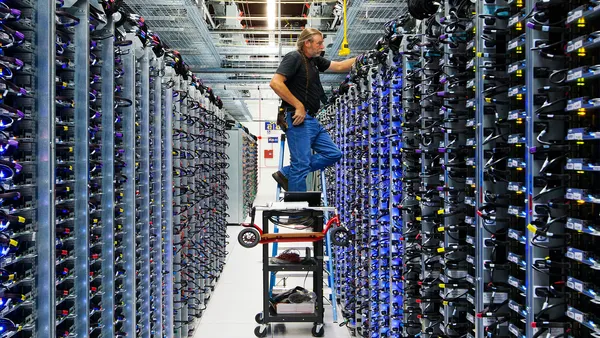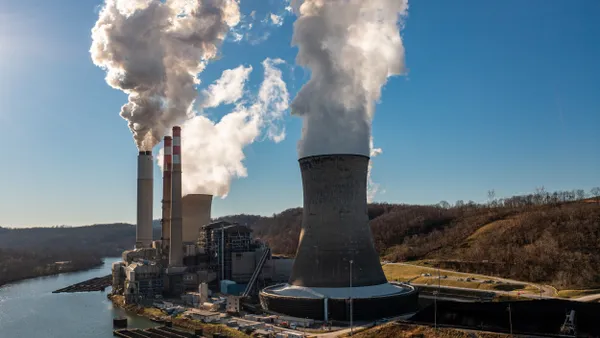Dive Brief:
- There are about 476,000 customers without power in Florida Power & Light's service territory Friday morning, the result of heavy winds ahead of Hurricane Matthew, which at 9 a.m. EST sat 45 miles north-northeast of Cape Canaveral.
- The storm has threatened to rip apart utility grids in Florida and other parts of the Southeast, though the National Hurricane Center has downgraded the storm and now says maximum sustained winds are about 120 miles per hour, with gusts up to 150 mph.
- FPL has warned it could face more than 1 million outages in the worst-case scenario. A state of emergency was declared in Florida, Georgia and South Carolina, though it appears the storm's track could take it further offshore and avoid the worst damage.
Dive Insight:
The track of Hurricane Matthew has changed, and it now appears the massive storm could move up the Southeast coast without making direct landfall. While that may spare the worst destruction, there will still be recovery efforts needed in Florida and other areas.
As of this 9 a.m. this morning, Florida Power & Light was reporting over 476,00 outages, with Brevard and Palm Beach counties the worst hit. Power had already been restored to 177,200 customers.
But the utility is bracing for the worst — on Wednesday, it said up to 1.2 million outages were possible.
"We understand the anxiety many of our customers are feeling at this moment and want to reassure them that we're ready to respond," FPL CEO and President Eric Silagy said in a statement. "We're deploying more resources pre-storm than ever before."
FPL is prepared to bring in more workers from other states, and now has a 12,000 strong restoration workforce including 9,000 workers in the field. The utility powered down its St. Lucie nuclear power plant ahead of the storm, but kept the Turkey Point nuclear plant online, as it was not expected to receive hurricane force winds.
Duke Energy Florida said it had mobilized 2,150 linemen and vegetation personnel, and said more crews could be added as needed.
The Edison Electric Institute said companies and crews in more than 25 states were preparing for restoration efforts.
“Hurricane Matthew is a dangerous storm," said EEI President Tom Kuhn. "Companies in the path of Hurricane Matthew have been preparing for days by pre-staging restoration workers and equipment. ... Safety is our industry’s number one priority, and crews will continue to work around the clock to restore power as conditions warrant.”
State-owned utility Santee Cooper in South Carolina declared a Condition 2 alert status yesterday, which means "potential disaster-causing conditions are approximately 24 hours away and adverse effects to Santee Cooper’s service area appears likely." The utility has about 175,000 customers in Berkeley, Georgetown and Horry counties.
“Our equipment is lined up, our vehicles are ready, and we are finalizing details to be sure we can respond to outages as soon as we safely can, Mike Poston, vice president of retail operations, said in a statement.
Last year the Union of Concerned Scientists identified southern Florida and the South Carolina low country as being vulnerable to the impacts of climate change. With its low elevation, parts of South Carolina's coast are particularly susceptible to flooding.
If a Category 3 storm, like Matthew, were to hit the region on top higher sea levels, “the impacts on coastal South Carolina could be severe,” the UCS report concluded.















